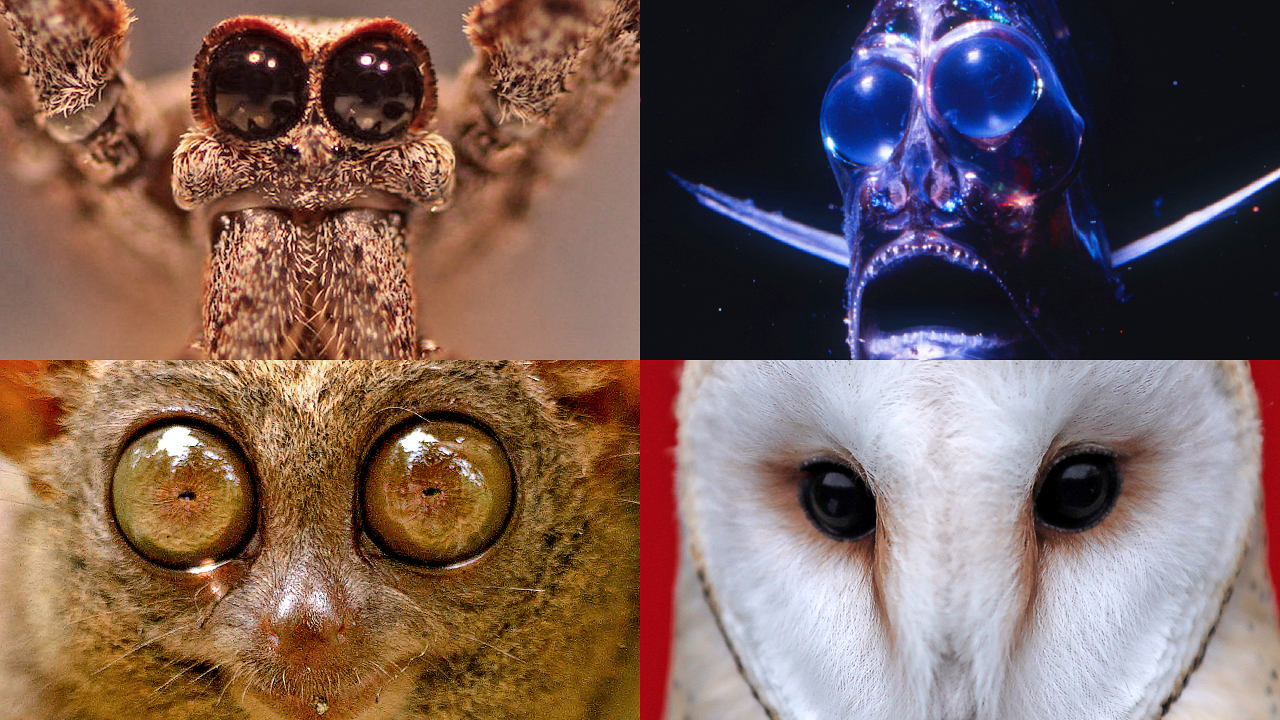Creatures of the Night: How Shadow-Dwelling Animals See in the Dark

Animals that are active at night or that inhabit gloomy ocean depths do everything from hunting to finding mates to defending their territory in murky worlds where navigation seems impossible — at least to those of us who rely on an abundance of light to see.
Some animals that dwell in the dark — such as cavefish — retain only vestigial organs where their eyes used to be, and rely on other senses to survive. But many creatures that are active under dim conditions not only kept their eyes, but evolved adaptations that enable them to make the most of what little light they have.
Recent studies have found that many of these animals — among them mammals, birds, fish, insects and cephalopods — are capable of impressive visual performance in darkened habitats, seeing the world in more detail — and with more colors — than suspected, researchers have discovered. [Images: See the World from a Cat's Eyes]
The mechanisms they use to navigate dim conditions are the subject of a group of studies published online Feb. 13, in a special issue of the journal Philosophical Transactions of the Royal Society B that explores how a variety of animals use their vision in the absence or near-absence of light.
"The overriding conclusion from this collection, and from other studies over the past 15 years, is that nocturnal and deep-sea animals do not live in an impoverished visual world," the special issue's editors David C. O'Carroll, a professor of animal physiology at the University of Lund in Sweden, and Eric J. Warrant, a professor of zoology at the same institution, wrote in an introduction.
"Many experience the world more or less as we do, being able to distinguish colour, negotiate obstacles during locomotion and navigate using learned visual landmarks," the editors said.
For example, one of the studies from the special issue described a type of photoreceptor that is unique to amphibians. This unusual photoreceptor allows toads and frogs to detect colors to orient themselves when threatened — and in light too dim for most animals to see anything at all.
Get the world’s most fascinating discoveries delivered straight to your inbox.
Another study found that nocturnal bull ants conduct "learning walks," during which they familiarize themselves with landscape features as they mark a foraging route. When they later follow this path, the ants search for known objects to help them find their way in the dark, the researchers said.
Other scientists investigated two species of the so-called cockeyed squid to understand how they used their mismatched eyes. These sea creatures, who live in ocean depths up to 3,200 feet (1,000 meters) below the water's surface, have one eye that is large and tube-shaped while the other is smaller and hemispherical.
The study authors found that the squid typically points the tubular eye upward, while their other eye scans downward. This allows the squid to spy bioluminescent prey with its smaller, downward-facing eye, while using its tube eye to spot flitting shadows of prey backlit by light from the surface, the scientists wrote in the study.
As this area of research is still relatively young, many of the questions raised in the studies are new, and may forge pathways for other inquiries that help to explain the unusual abilities of these and other animals that live in the shadows.
"Vision is one of our richest senses," O'Carroll and Warrant wrote. "Given our fascination with creatures active in the dark of night and of monsters from the deep sea, this is a subject that will also interest a broad range of scientists, high-school students and members of the general public — anyone wishing to learn about how animals can see in the dark."
Original article on Live Science.

Mindy Weisberger is a science journalist and author of "Rise of the Zombie Bugs: The Surprising Science of Parasitic Mind-Control" (Hopkins Press). She formerly edited for Scholastic and was a channel editor and senior writer for Live Science. She has reported on general science, covering climate change, paleontology, biology and space. Mindy studied film at Columbia University; prior to LS, she produced, wrote and directed media for the American Museum of Natural History in NYC. Her videos about dinosaurs, astrophysics, biodiversity and evolution appear in museums and science centers worldwide, earning awards such as the CINE Golden Eagle and the Communicator Award of Excellence. Her writing has also appeared in Scientific American, The Washington Post, How It Works Magazine and CNN.


